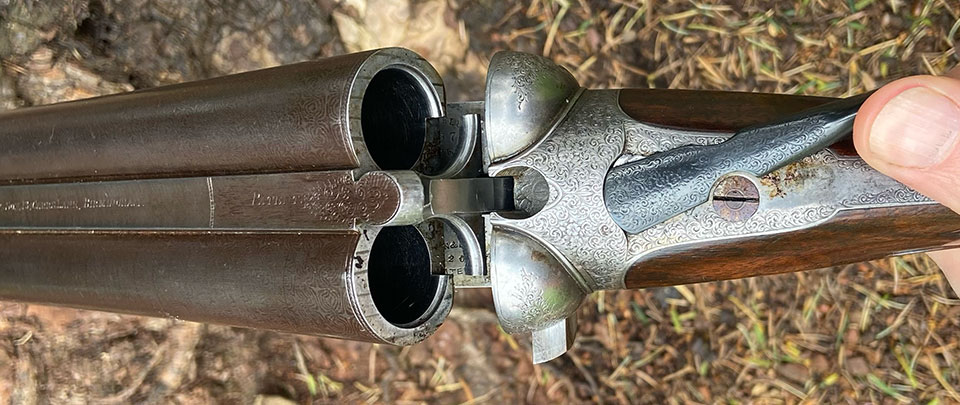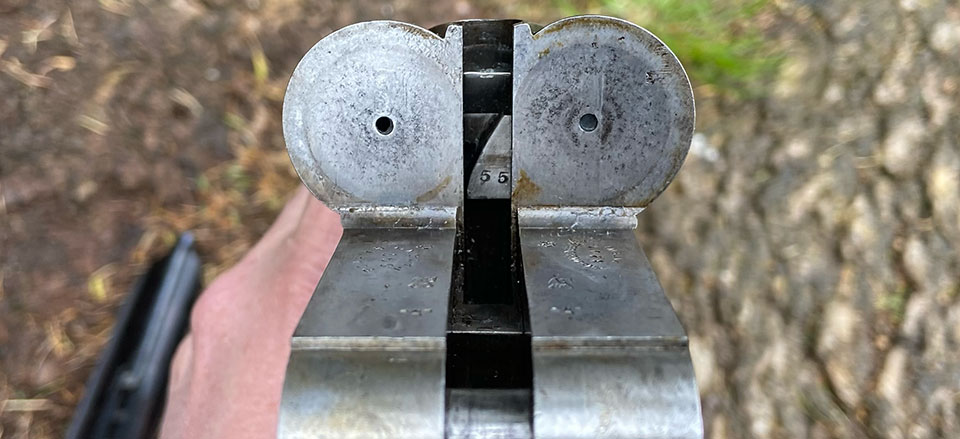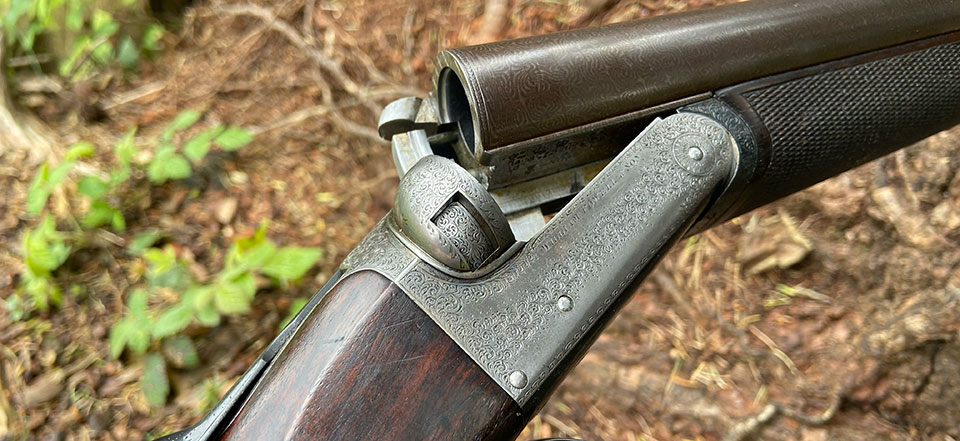'Best boxlock non-ejector' is not a common term, as most customers ordering best guns wanted ejectors.
However, ejectors did not appear as an option until Needham's 1874 patent and with the Anson & Deeley boxlock's arrival in 1875, it took a few years for the idea of ejectors to become commonplace on hammerless guns.

This William Powell is the 8,207th Anson & Deeley made under licence. It is also the 597th made with Powell's own patent locking mechanism.
Powell, like Westley Richards, where Anson & Deeley worked, was a well established Birmingham gunmaker with a reputation for quality. He was an early adopter of the Anson & Deeley action and here we can see a best quality examle of it, made in 1885. This was just before the Deeley box ejector was created. That would become the most widely used ejector system for boxlocks and in 1885, ten years after the boxlock arrived on the market, there was still no obvious candidate for delivering reliable ejection.

That being the case, some customers carried on with reliable non-ejectors rather than order anything more complictaed. After-all, that generation of shooters had not yet become acclimatised to the idea that a sporting gun had to eject shells automatically.
A quick inspection of the gun quickly establishes that it is not a common boxlock non-ejector. Most early boxlocks have either a Westley Richards single lump with a bolted doll's head operated by a top-lever, or a top-lever operating a Purdey bolt, via a Scott spindle.
At this time, the other big Birmingham gunmaker of renown was W.W. Greener and he was busy promoting his own body-action gun, the 'Facile Princeps' and his 'Treble Wedge Fast' bolting system.

Powell took out this patent in 1876 (No.493 of that year). It incorporates a very large rear lump, which slots into yteh action bar to cleate lateral stability, a projection from the extractor, which slots into teh action face and a doll's head which slots into a corresponding cut-out on the top of the action.

The big lateral sliding bolt, operated by the top-lever, is shaped so that part of it slots into a vertical bite in the rear lump, where it extends into the action face, thereby bolting it shut.

When closed, it looks very much like a conventional boxlock but when dis-assembled it appears ungainly and unnecessarily complex, compared to the simplicity of the Purdey bolt.
It is, however, constructed very well indeed and has all the hallmarks that made Powell's reputation as one of Birmingham;s finest gunmakers. The fine Damascus barrels, which have been re-proofed, still ring nicely and the fit of wood to metal is firts class.
It is, undoubtedly, a must-have addition to any serious collection of proprietary actions and it demonstrates nicely another of the inventive ways that this gunmaker found to do the same job of closing the gun and keeping it closed as the Purdey bolt, without infringing Purdey's patent.

In 1885, this gun was already mechanically obsolete. I suspect it had been started several years before it was sold. Today, it represents a very nice piece of Birmingham gunmaking history and best quality gunmaking at a very modest cost.
Boxlock non-ejectors are fabulously reliable and the best value on the market. How else can you buy a genuinely best gun in very good condition for under £1,000?
Published by Vintage Guns Ltd on




